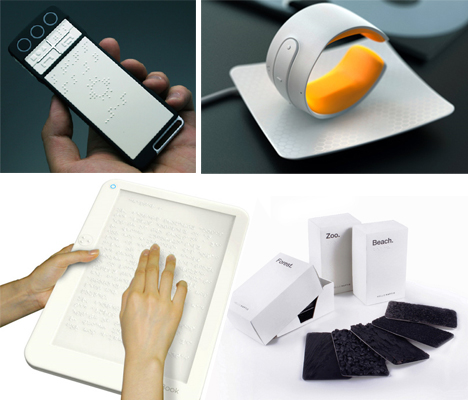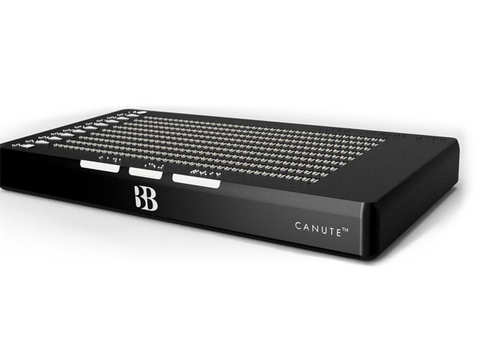Empowering Freedom With Assistive Technology for the Blind
The combination of assistive innovation right into the lives of individuals with visual impairments represents a significant advancement in promoting self-reliance and self-sufficiency. From innovative display readers to advanced smart canes, these tools not just enhance daily navigation and communication but also encourage customers to engage meaningfully in various aspects of life. As we check out the myriad advantages and real-world applications of these modern technologies, it becomes crucial to take a look at the underlying factors that add to their efficiency and the potential for future growths in this vital field.
Review of Assistive Technology

The advancement of assistive innovation is based in principles of inclusivity and empowerment. Advancements in software, hardware, and sensory enhancements supply customers with choices customized to their details requirements. From display visitors that transform text to speech, to tactile devices that share info through touch, these devices transform the way people involve with their environments.
In addition to useful applications, assistive modern technology promotes higher social incorporation and involvement in numerous markets, consisting of education and employment (Wearable technology for low vision). As r & d remain to progress, the capacity for assistive technology to further enhance the lives of visually impaired individuals continues to be appealing, leading the method for a more equitable society where everyone can grow
Sorts Of Assistive Instruments
A selection of assistive devices have arised to sustain individuals with aesthetic disabilities, each made to satisfy certain needs and improve daily functioning. These tools range from low-tech remedies to sophisticated innovations, providing varied alternatives for users.
Low-tech gadgets include magnifiers and large-print materials that aid in reading and writing. Braille tools, such as Braille stylus pens and slates, allow tactile analysis and communication. Positioning and movement aids, like white walking canes, aid individuals browse their atmosphere securely.
On the higher end of the spectrum, digital zoom systems and screen viewers provide considerable support. Digital magnifiers permit individuals to increase the size of text and pictures on screens, while display readers convert electronic web content into manufactured speech, facilitating accessibility to information on smart devices and computers.
Mobile phone applications additionally play a vital function, giving functions like text recognition and navigation assistance. Wearable innovation, such as clever glasses geared up with augmented reality, is becoming a promising device to enhance situational understanding.
Advantages of Assistive Modern Technology
The combination of assistive modern technology significantly improves the top quality of life for individuals with visual problems. These technologies empower users by advertising independence, enabling them to navigate their environments better and do day-to-day tasks with better simplicity. Display readers and magnification software allow individuals to access digital information, cultivating instructional and specialist opportunities that might have previously been out of reach.
In addition, assistive devices such as clever walking canes and GPS applications provide real-time navigating support, enhancing flexibility and safety and security. This increased autonomy not only boosts self-worth yet likewise urges social interaction, enabling customers to participate even more totally in their areas.
Assistive technology likewise assists in interaction, aiding individuals attach with others through voice recognition and text-to-speech applications. This ability is vital for keeping connections and accessing critical details.
Furthermore, the customization choices available with several assistive innovations make certain that customers can customize gadgets to their specific demands, better boosting functionality and performance. Overall, the benefits of assistive innovation for people with aesthetic disabilities are profound, promoting an extra inclusive culture where every person can pursue their objectives and aspirations.
Instance Researches and Success Stories
Highlighting the transformative impact of assistive technology, countless situation research studies show just how individuals with aesthetic disabilities have actually effectively integrated these tools into their lives. One compelling example involves a college trainee who utilized screen article source reading software to browse on-line sources and scholastic products successfully. This technology not just promoted her education however likewise enhanced her confidence in taking part in conversations and team jobs.
An additional study features a specialist that uses a smartphone application created for navigating and things recognition. By using this app, he has actually reclaimed freedom in both his personal and work atmospheres, enabling him to commute individually and engage with associates better.
Furthermore, a retired person shared her experience with braille e-readers, which enabled her to access a substantial range of literary works and remain gotten in touch with her community via publication clubs.
These success stories underscore the critical duty of assistive innovation in promoting independence, enhancing quality of life, and promoting social combination for people with aesthetic impairments (Voice-activated assistive devices). By welcoming these innovative devices, individuals can get rid of difficulties and take chances that add to their expert and individual satisfaction

Future Trends in Assistive Innovation
Innovation in assistive innovation is poised to redefine the landscape of assistance for people with visual problems. Arising fads highlight the combination of fabricated knowledge (AI) and equipment learning, which enhance the capability of tools that help with navigation and details availability. AI-driven applications are currently qualified of translating visual information in real-time, enabling individuals to engage with their environment much more individually.
In addition, the development of wearable innovation is advancing quickly. Smart glasses geared up with enhanced truth (AR) can offer audio descriptions of environments, changing how customers connect with public areas. These devices not only promote check it out freedom however also foster social incorporation.
Furthermore, the Web of Points (IoT) is making homes smarter, enabling for seamless connection between daily devices and assistive gadgets. This connectivity encourages users by allowing voice-activated controls and automatic responses tailored to individual requirements.
Conclusion
In final thought, assistive technology plays a critical duty in check my blog empowering individuals with aesthetic problems by enhancing their self-reliance and engagement with their environments. The varied series of tools and applications available not only facilitates navigation and communication yet also advertises social assimilation and opportunities for individual and expert development. As developments continue in this field, the possibility for boosting the lifestyle for those with aesthetic disabilities will broaden, fostering greater freedom and empowerment.

Comments on “Voice-Activated Assistive Devices: Enabling the Visually Impaired”